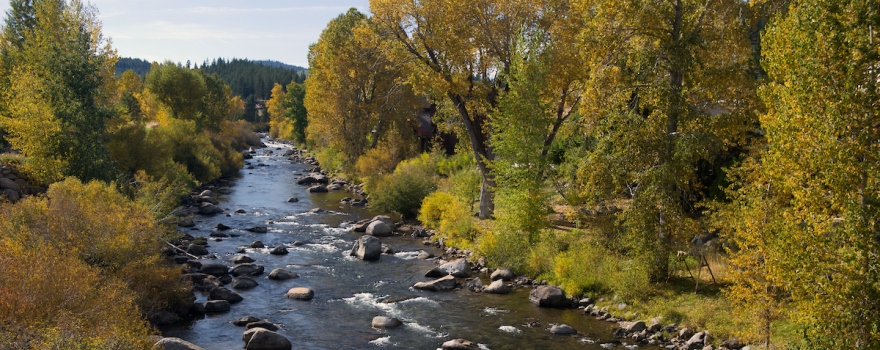
 From the Department of Water Resources:
From the Department of Water Resources:
Forecast Summary:
A Water Year 2018 Water Supply Index (WSI) forecast for conditions as of December 1, 2017 is posted at http://cdec.water.ca.gov/cgi-progs/iodir_ss/wsi . The accretions forecast will be sent at a later time. The WSI forecast is based on the precipitation and runoff (full natural flow) through November 2017 and can be summarized as follows:
| Sacramento River Unimpaired Runoff Water Year Forecast
(50 percent exceedance) |
19.6
(110 percent of average) |
| Sacramento Valley Index (SVI)
(50 percent exceedance) |
9.3
(Wet) |
| San Joaquin Valley Index (SJI)
(75 percent exceedance) |
2.8
(Below Normal) |
Runoff:
Unimpaired flows for the 2016-2017 water year have run at the following rates of average:
| Region | October-November Runoff (%) | November Runoff (%) |
| Sacramento Valley Index (4 rivers) | 117 | 131 |
| San Joaquin Valley Index (6 rivers) | 147 | 163 |
| Tulare Lake Basin (4 rivers) | 109 | 99 |
Precipitation:
The month of November was particularly wet in the Sacramento River Valley region (170% of average) and the Northern Sierra 8-Station Precipitation index (168% of average). While precipitation has accumulated at an above average pace in the Northern Sierra and Sacramento River Valley region, it has fallen below average in the San Joaquin and Tulare Lake basins. The San Joaquin 5-Station index was just below average (93%) in November while the Tulare Lake 6-Station index was at 60 percent of average.
Precipitation for the 2016-2017 water year accumulated at the following rates of average:
| Region | WY accumulated precipitation (%) through November 30, 2016 |
| Sacramento River Valley | 124 |
| San Joaquin River Valley | 74 |
| Tulare Lake Basin | 43 |
| Statewide | 85 |
| Regional Precipitation Indices | As of December 8, 2017 |
| Northern Sierra 8-Station Index | 103 (12.3 inches) |
| San Joaquin 5-Station Index | 56 (4.8 inches) |
| Tulare Basin 6-Station Index | 37 (2.0 inches) |
Snowpack:
The snowpack as of the morning of December 8, 2017 stands at the following (based on snow sensors):
| Region | Snow Water Equivalent (inches) | % of Average (Apr 1) | % of Average (Dec 8) |
| Northern | 1.9 | 7 | 34 |
| Central | 2.6 | 9 | 42 |
| Southern | 2.1 | 8 | 45 |
| Statewide | 2.3 | 8 | 40 |
Weather and Climate Outlooks:
The 6-day weather forecast calls for dry, mild conditions due to a persistent high pressure system anchored off the coast of California. Thus, no precipitation is forecast anywhere in the state during the next six days. Daytime temperatures will generally range from 5-10 degrees above normal and even warmer along the Southern California coast, while overnight lows will be closer to average. The freezing levels for the most part will range from 10,500 feet to 13,500 feet in the Sierra Nevada with areas of frost in the Central Valley possible.
The NWS Climate Prediction Center (CPC) one‐month outlook for December, valid November 30, indicates increased chances of above normal temperatures and below normal precipitation for the entire state.
The CPC three‐month (December‐January‐February) outlook, posted November 16, indicates increased chances of above normal temperatures for the lower all areas of the state south of the Sacramento region including most of the Sierra Nevada. For the areas to the north of this region including the Feather, Sacramento, and Trinity watersheds, the outlook calls for equal chances of above or below normal temperatures. The same outlooks calls for increased chances of below normal precipitation for the southern half of California from the San Francisco Bay area southward, including the Central and Southern Sierra Nevada. For the areas north of this region, including the Lake Tahoe and Feather River watersheds, the outlook calls for equal chances of above or below normal precipitation.
According to the latest El Nino/Southern Oscillation (ENSO) discussion issued by the Climate Prediction Center on December 4, 2017, weak La Niña conditions are present. Equatorial sea surface temperatures (SST) are below average in the central and eastern Pacific Ocean. La Niña conditions are favored to persist (~65-75% chance) through winter 2017-18.
Next Update:
The next WSI forecast for conditions as of January 1, 2018 will be available on January 9, 2018. If you have any questions regarding this forecast, please contact a member of the Snow Surveys staff.
Important Links
Full Natural Flow Data:
- Daily FNF: http://cdec.water.ca.gov/cgi-progs/snowsurvey_ro/FNF
- Monthly FNF: http://cdec.water.ca.gov/cgi-progs/snowsurvey_ro/FNFSUM
- Seasonal FNF: http://cdec.water.ca.gov/cgi-progs/snowsurvey_ro/FLOWOUT
Precipitation Data:
- Latest Northern Sierra 8-Station Precipitation Index: http://cdec.water.ca.gov/cgi-progs/queryDaily?s=8SI&d=today
- Latest San Joaquin 5-Station Precipitation Index: http://cdec.water.ca.gov/cgi-progs/queryDaily?s=5SI&d=today
- Latest Tulare Lake Basin 6-Station Precipitation Index: http://cdec.water.ca.gov/cgi-progs/queryDaily?s=6si&d=today
Snow Data:
- Latest Snow Sensor Report: http://cdec.water.ca.gov/cgi-progs/snow/PAGE6
- Latest Statewide Summary of Snow Water Equivalents: http://cdec.water.ca.gov/cgi-progs/snow/DLYSWEQ
Extended Regional Forecasts:
- California Nevada River Forecast Center 6 Day QPF and Snow Level Forecast: http://www.cnrfc.noaa.gov/awipsProducts/RNOHD6RSA.php
- Climate Prediction Center One-Month Outlook Forecasts: http://www.cpc.noaa.gov/products/predictions/30day/
- Climate Prediction Center Three-Month Outlook Forecasts: http://www.cpc.noaa.gov/products/predictions/long_range/seasonal.php?lead=1
- U.S. Seasonal Drought Outlook: http://www.cpc.ncep.noaa.gov/products/expert_assessment/sdo_summary.html
- Weather Forecast Office California Service Area-Products: http://www.cnrfc.noaa.gov/forecasts.php
- El Niño Southern Oscillation (ENSO) Conditions and Weekly Discussion (including La Niña): http://www.cpc.ncep.noaa.gov/products/analysis_monitoring/lanina/enso_evolution-status-fcsts-web.pdf
Click here to view all posted announcements.
 Get the Notebook blog by email and never miss a post!
Get the Notebook blog by email and never miss a post!
Sign up for daily emails and get all the Notebook’s aggregated and original water news content delivered to your email box by 9AM. Breaking news alerts, too. Sign me up!


